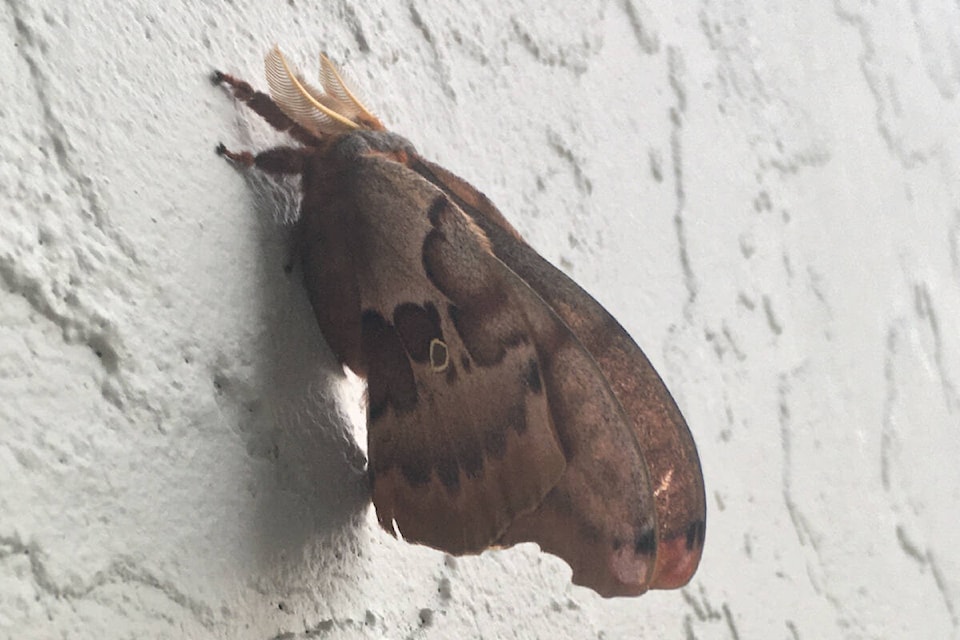An insect resembling a muted butterfly with feather-like antenna rested on a Greater Victoria apartment building.
The polyphemus moth (Antheraea polyphemus) is not uncommon in the region, but not always spotted in urban or concrete areas, away from its grazing grounds, explained Justin Dunning, living collections manager at Victoria Butterfly Gardens.
With a wingspan of about 150 millimetres, it’s the largest of three silk moths generally found in the region.
As larvae, they enjoy many a local feast on beech, birch, oak or willows. Transforming, the moths begin to emerge from cocoons in late May, with the female ready with mature eggs – she just hangs around while the male puts his feathery antennae to use, seeking out female pheromones.
READ ALSO: Beloved monarch butterflies now listed as endangered
By this stage, they cannot, and do not, eat. These moths live to procreate.
The male can mate several times in his five- to seven-day lifespan while the female spends its time mating once and then laying eggs.
The polyphemus is closely related to the giant atlas moths from the Philippines on display at Butterfly Gardens in Central Saanich. Similarly, they live about a week and don’t eat because they lack mouths in their adult forms.
The atlas (Attacus atlas) though is a fair bit larger than the locals at 240 mm and the tropical insect can stay in its cocoon for up to five years, though it’s not common.
Skipping a year isn’t uncommon, if they sense the weather’s not right, they’ll wait.
READ MORE: Pandemic boom in Greater Victoria park use translates to better insect understanding
Aside from the polyphemus, two other common locals are cecropia moth (Hyalophora cecropia) at about 160 mm and the ceanothus moth (Hyalophora euryalus) at about 120 mm.
There are hundreds of species of moths, Dunning explained, and locally they’re mostly good, aside from the tent or spongy. He recommends letting the good ones have their fill of foliage.
READ ALSO: These 3 pests with rising populations can decimate foliage
Butterfly Gardens frequently turns away residents who inadvertently interrupt the natural process. Surprised that such an intricate creature is native, and thinking it must be an escapee, with the best of intent, residents will often capture a polyphemus or sphinx and try to “return” it.
Dunning is among the many proponents of the iNaturalist app that allows citizen scientists to use their phone or camera to photograph and help identify plants and animals, categorized by location.
“Leave it outside, it’s a native species,” Dunning said. “Enjoy it, take your photos, show people, then put it where you found it because it’s in the realm of its host plant.”
For more news delivered daily into your inbox, please click here.
VIDEO: Invasive lizard population spreads across Vancouver Island
c.vanreeuwyk@blackpress.ca



